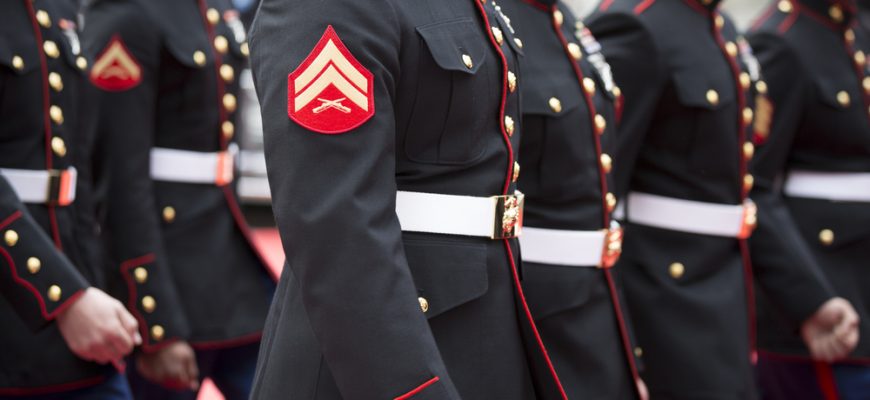Camp Lejeune, the North Carolina Marine Corps Base, originally established in 1942 for military training, tragically came down in history as the US’ worst public water contamination crisis. Volatile Organic Compounds (VOCs) from an offsite dry cleaning facility silently crept into the Camp’s groundwater, starting in 1953.
For the next three decades, oblivious veterans and their families consumed the Camp’s toxic waters. Three of the eight tanks on the Base were contaminated, namely, the Hadnot Point, the Tarawa Terrace, and Holcomb Boulevard.
The first major discovery of water toxicity was made only in 1982. Even then, matters were pushed under the rug for another decade and a half. It was only in the late 1990s that the US Environment Protection Agency even acknowledged the health risks associated with the toxic waters.
Then, President Obama passed the Camp Lejeune Bill in 2012 to offer affected veterans and their families with free medical care. Ten years later, President Joe Biden officially enacted the Camp Lejeune Justice Act in August 2022, making victims eligible for justice and compensation.
Veterans only have time till August 2024 to file their lawsuits against the North Carolina Federal Court. So, what is the current scenario and how is the jury planning to tackle the Camp Lejeune cases? Keep reading to know more.
Where Camp Lejeune Cases Stand Today
As per the estimations of the US Department of Veterans Affairs, the Camp Lejeune water contamination crisis had at least 1 million victims. Of these, many have either died due to age or succumbed to their Camp-related injuries.
Even so, the number of lawsuits made it necessary to introduce the US Navy Judge Advocate General (JAG) as an intermediary. Meaning, plaintiffs cannot directly file a lawsuit against the North Carolina Federal court. They can only make administrative claims with the Navy JAG, who will then offer a resolution within six months.
In case of no resolution or denial, the plaintiff has another six months to file an individual lawsuit or appeal denial. It is estimated that the Navy JAG has received at least 60,000 claims, of which 25,000 are from Florida alone. As these cases (and individual lawsuits) are to move to the Federal Court, its jury of four judges is swamped at the numbers.
In fact, Judge James Dever opened the hearing by comparing the Camp Lejeune settlement timeline with the Roman Empire (which existed for 1,900 years). The Court is planning to find a way for speedy settlements in light of the fact that most plaintiffs are well advanced in age and cannot afford to wait around for years. Also, many are struggling with medical sensitivities and financial hardships.
Attempts to Draw a 9/11 Parallel
Besides discussing the impracticality of adjudicating and going through each individual claim, Judge James Dever also drew a parallel with the World Trade Center 9/11 attacks. A similar mass tort situation had occurred, where differences found among individual cases were highly complicated.
The Judge’s response to this complex situation was the development of a database where detailed information about individual cases was noted down. Once this database was compiled, the Judge found that most of these cases were not too serious. This helped in streamlining the settlement process.
It appears that the North Carolina Federal Court judges have also proposed the development of a similar database. They believe this should help them identify the minor cases, thereby streamlining the Camp Lejeune compensation process.
However, TorHoerman Law attorneys believe the process may not be as easy as the 9/11 parallel. Firstly, this is because the latter only had around 6,000 lawsuits but Camp Lejeune cases are 65,000 and counting.
Secondly, those 6,000 cases themselves took nearly five to six years to reach settlements. Thirdly, the judges have to factor in individual case factors over and above the categories or tiers they plan on segregating each case into. These would include –
- The level of suffering endured
- Whether or not the contracted injury is curable
- How much time the victim has to live
- The extent of financial damage and medical sensitivity
- How the victim’s life has been disrupted by the condition
Off to a Fast Start: The Stages Involved in a Mass Tort Case
Camp Lejeune cases are to be tackled as a mass tort as opposed to a class action. In the latter, a single lawsuit is filed on behalf of every plaintiff. In a mass tort case, every plaintiff files an individual lawsuit but the jury handles the cases together. This makes the mass tort more complex than a class action lawsuit. It involves the following stages –
1. Review of Records
In a mass tort case, lawyers need to review a plethora of records to prove that the victim sustained the said injuries at the site (in this case, Camp Lejeune). This is a lengthy process because typical personal injury cases require reviewing the past 10 years of medical history.
But, lawyers need to dig through the plaintiff’s entire medical history for a mass tort case. Only then will they be able to fight the case against the defendant (who will work hard to prove they’re not to blame for the injuries).
2. Distinguishing Uniformity
The next stage involves identifying consistencies with other plaintiffs so that the victim in question may qualify for a filing. Camp Lejeune’s crisis saw common injuries like cancers of the bladder, liver, blood, lungs, and esophagus, female infertility, Parkinson’s disease, etc.
Out of these, a rare kind of male breast cancer was exclusive to the Camp Lejeune crisis. This uniformity is crucial because only a handful of cases will set the stage for the rest. If these few cases do not meet the uniformity standards, none may qualify for compensation.
3. Lawsuit Filing
Once a uniform case pattern is identified, lawyers will then consolidate the cases together for filing. This helps in streamlining the settlement process, thereby accelerating it.
In the case of Camp Lejeune, the judges wish to expedite the process at this stage to ensure no victim (especially those well-advanced in age) has to wait for years before receiving compensation.
4. Claim Settlement or Resolution
The final stage of a mass tort case is that of claim resolution or settlement. The stage is often ambiguous because it all boils down to negotiations and appeals. Since mass tort cases are complex, this process may take months at the least and years at most.
However, cases do reach a settlement sooner or later. Once that happens, the plaintiffs receive relevant compensation based on their unique case.
An Estimated Timeline
Can a definite timeline for claims resolution be given for the Camp Lejeune water contamination crisis? No, because a lot of factors come into play. Though Federal Court judges have decided to accelerate the process as much as possible, there are limitations.
For instance – All plaintiffs living in different parts of the US need to come together at the North Carolina Federal Court (which will take some time). Then, finding supportive testimony from witnesses is a lot more complex for mass tort cases.
Only when the case is persuasive enough will it stand against the defendant. From the initial discussion, it looks like both parties would be willing to come to a settlement so as not to pursue the case further.
In Summation
Despite North Carolina Federal court judges being swamped by the number of cases, is a settlement on the horizon? It depends on factors like the mass tort’s procedural process and how the government ultimately handles each case.
Some experts estimate that it may take anywhere from 14 to 26 months for the Camp Lejeune cases to reach a settlement. However, the time taken to receive compensation may extend till 2033. This makes it important to partner with a reliable law firm that can assist through all the stages for a quicker chance at claim settlement.









